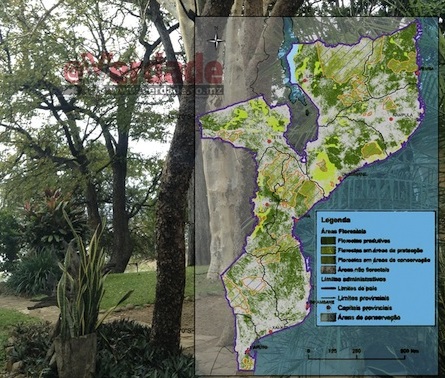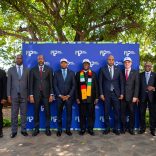Mozambique: Quelimane tops Africa’s bicycle-friendly cities ranking
MITADER extends logging ban on Ironwood, Mondzo, Nkula, Inhamarre and Mbuti – Mozambique

Photos: A Verdade
The Ministry of Land, Environment and Rural Development (MITADER) will extend to 2019 the prohibition it imposed last March on the felling of Ironwood, Mondzo and Nkula Inhamarre and Mbuti trees. A Verdade further reports that, because of the indiscriminate logging that has taken place in recent years, the Ironwood ban could be extended for another 10 years.
One of the corollaries of Operation Trunk, carried out in 2017, was Minister Celso Correia’s decision to ban “the exploitation and collection of wood of the species Pterocarpus tinctorius (Nkula), Swartzia madagascariensis (Pau-ferro) and Combretum imberbe (Mondzo) “.
In a dispatch dated March 29, 2018, Minister Correia also determined that the species Afzelia quanzensis (Chanfuta), Pterocarpus angolenses (Umbila) and Millettia stuhlmannii (Jambirre) could not be exported.
@Verdade has determined that the results of the National Forest Inventory, concluded last August, led the government to maintain the ban on the felling of Nkula, Ironwood and Mondzo and also extended the ban on Ekebergia capensis (Inhamarre) and Mbuti.

The document in the possession of @Verdade recommends that the “special closure of the Ironwood be extended for another 10 or 15 years, and that during this period the effect of the special closure on the species should be monitored”. It also submits that Tule, Umbáua, Umbila, Jambirre and Mondzo be subject to “a special closure or a requalification as precious species”.
The National Forest Inventory researchers did not find any tree of the Nkula species that had reached the diameter from which commercial species can be legally harvested and therefore recommend “that the exploitation of this species be suspended until a detailed provincial inventory or an inventory focused on this species [could be carried out]”.
“Of the total of 119 commercial species in Mozambique, only 106 species were found. Of these 106, only 72 had individuals at breast height from which commercial logs could be legally harvested,” the National Forestry Inventory that A Verdade has had access to reports.
The largest 2019 wood exploitation quotas will be allocated in the provinces of Zambézia, Cabo Delgado and Sofala
Also in the information provided by Minister Celso Correia to the Assembly of the Republic’s Committee on Agriculture, Economy and Environment, was the news that, based on the results of the 2018 National Forestry Inventory, MITADER would lower the total volume of wood to be harvested from the current year’s 350,000 cubic metres to 347,528 cubic metres in 2019.

A Verdade found that the largest quotas in 2019 will be attributed to Zambezia province (81,483 cubic metres), Cabo Delgado (62,042 cubic metres) and Sofala (61,445 cubic metres), given that, according to the Forestry Inventory this year, these are the provinces with a higher density of trees with a diameter at the height of the chest superior to 40 centimetres per unit and where the largest number of forest operators and forest concessions are concentrated.

The maps of the MITADER forestry quota forecasts that @Verdade has had access to also show that, of the precious species, the largest quota will be of Ironwood (14,034 cubic metres, of which 6,367 in the province of Cabo Delgado), Black Chacate (8,421 cubic metres – 6,355 in Inhambane), Sandalwood (5,867 cubic metres – 4,094 in Inhambane), Muoma (5,111 cubic metres – 3,812 in Cabo Delgado), and Ebony (1,207 cubic metres, all to be cut in Sofala).
Regarding first-class timber, @Verdade revealed that the largest quota would be Chanato (63,758 cubic meters, of which 47,120 in the province of Tete), Umbila (60,411 cubic metres – 32,777 in Zambezia), Chanfuta (42,947 cubic metres – 15,134 in Cabo Delgado), Jambirre (35,543 cubic metres – 12,086 in Cabo Delgado) and Muanga (9,990 cubic metres – 8,595 in Zambezia).
By Adérito Caldeira












Leave a Reply
Be the First to Comment!
You must be logged in to post a comment.
You must be logged in to post a comment.